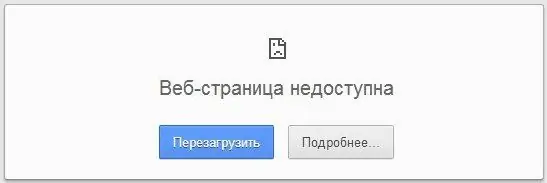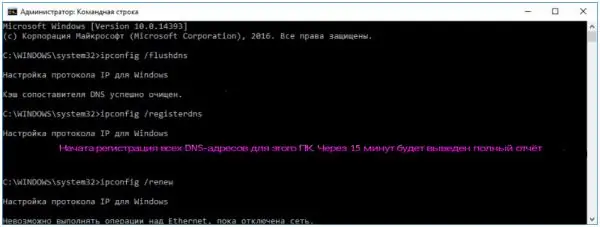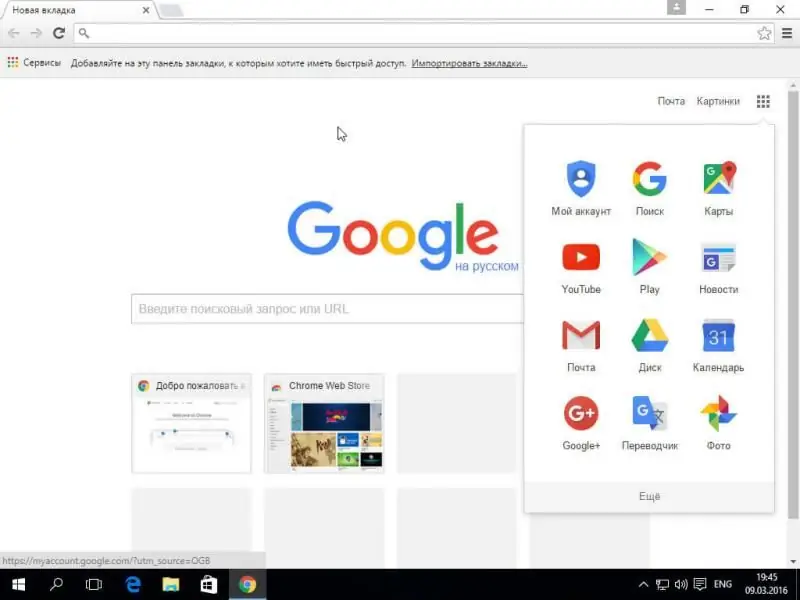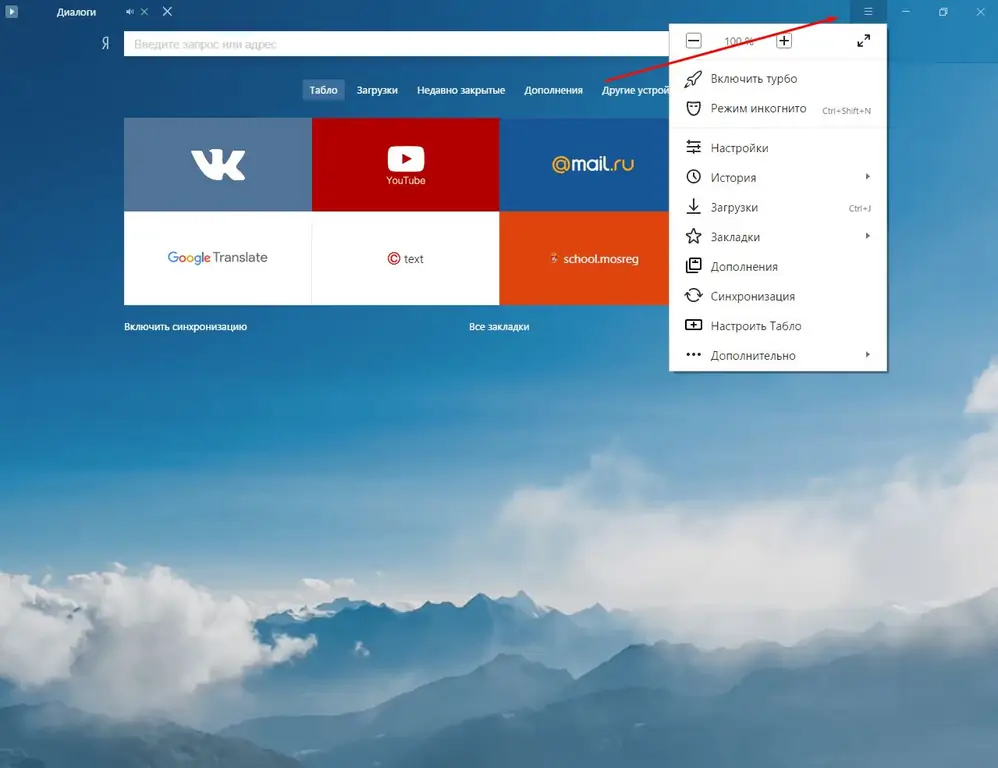
Table of contents:
- Author Bailey Albertson [email protected].
- Public 2023-12-17 12:53.
- Last modified 2025-01-23 12:41.
Why sites do not open in the browser when the Internet is available

A novice user, faced with the inoperability of sites in browsers, may think that the problems have arisen because of the provider that turned off the Internet. In fact, the cause may be incorrect Windows and browser settings. In most cases, this problem does not require reinstalling Windows and the browser and reconfiguring network access.
Content
-
1 The crux of the problem with web surfing
-
1.1 Pinging a site that won't open
1.1.1 Video: How to check ping through the "Command Line"
-
-
2 How to fix problems with the transition of the browser to the desired sites
-
2.1 Checking Windows for viruses
2.1.1 Working with Kaspersky Virus Removal Tool
- 2.2 Correcting errors in the Windows registry
-
2.3 Change the DNS setting of the network connection
2.3.1 Video: How to Change DNS Addresses in Windows 7/8/10
- 2.4 Clearing DNS cache and resetting network settings
- 2.5 Change Windows Network Setting in Internet Explorer
-
2.6 Accessing Websites by Changing the Hosts File
2.6.1 Video: How to Edit Hosts File Entries
- 2.7 Breaking Static Routes
-
2.8 Plugins that change browser connection settings
2.8.1 Video: How to remove an extension from the browser
- 2.9 Other reasons for not working web browsing
-
The crux of the web surfing problem
The refusal of the browser to go to the sites does not mean that the Internet is not working. With an existing connection, third-party applications exchange data (ICQ, WebMoney Keeper, Forex client terminals, downloading Avast anti-virus databases, etc.). Built-in - Windows Update, Cortana, Microsoft account components, etc. - also demonstrate the end result. Browsers - Internet Explorer, Microsoft Edge, Google Chrome and their competitors - block the opening of any site. Even something as simple and straightforward as ya.ru (a mini-version of the search engine yandex.ru) is not shown.

Press the webpage reload button once
The reasons for browsers not working are varied - from problems in the Windows system itself, including connection problems, to the failure of a particular site that you browse every day.
Ping a site that won't open
To make sure that the Internet is available, the "Command Line" application allows. With its help, you need to check the ping to the server. Follow these steps:
-
In Windows 8 / 8.1 / 10, right-click on "Start" and select "Command Prompt (Admin)". In Windows XP / Vista / 7, click on "Start", go to "All Programs", then "Accessories", right-click on the "Command Prompt" and select "Run as (administrator)".

Launching Windows 8 / 8.1 / 10 "Command Prompt" with administrator rights To open the "Command line" just right-click on "Start" and select "Command line (administrator)"
-
Enter the "ping" command. For example, users often ping the ya.ru server (request “ping ya.ru”). If there is no connection, "Command Line" will report that it was not possible to log out to the server in question.

Pinging yandex.ru in the "Command line" The "command line" can report the unavailability of the server of this or that site
-
If there is an Internet connection, 4 test IP packets will be sent and received. In the absence of losses, the connection is considered reliable, with complete or almost complete loss of transmitted packets - bad. If the server or the communication channel is overloaded, the message “Request timed out” appears.

The result of checking the required server in the "Command Line" Even if the loss is 100%, there is an Internet connection
If the connection works, skip to the next instructions.
Video: how to check ping through the "Command line"
How to fix problems with the transition of the browser to the desired sites
First of all, check your computer or tablet for viruses.
Check Windows for viruses
The following antivirus programs are used to search for malicious codes:
- Dr. Web (freely available - the CureIt utility);
- Kaspersky Anti-Virus (free Kaspersky Free, from professional - Kaspersky Internet Security);
- ESet NOD32 (there is ESet Smart Security software package);
- Avast;
- Panda;
- 360 Total Security;
- Windows Built-in Defender and Cumulative Security Patches from System Update;
- ADWCleaner;
- AVZ and other analogues.
Like CureIt, Kaspersky VRT is a simple utility with a minimum of features. Let's look at her example of checking a PC for viruses.
Working with Kaspersky Virus Removal Tool
After downloading the Virus Removal Tool from kaspersky.com, temporarily disconnect from the Internet. Follow these steps to run a virus scan on your PC:
-
Run the utility and click the Start Scan button.

Starting a PC virus scan with Kaspersky VRT Click the start check button
-
Make sure that the search for malware in RAM and PC disks is enabled.

Scan options in VRT app Choose at least RAM and drives that run on your PC
-
If virus records are found, a list of them will be displayed. For each of the found files, select the "Copy to quarantine" option, and immediately delete the suspicious ones.

Neutralizing suspected viruses in Kaspersky VRT It is better to delete files from unknown sources immediately
- To confirm the action, click the "Continue" button.
Virus Removal Tool does not load the PC with continuous deep scanning of disk contents, like its counterpart, Kaspersky AntiVirus.
Correcting errors in the Windows registry
Incorrect values of folders and keys in the Windows registry, which are responsible for the operation of both the network connection and its system DLLs, can lead to the fact that none of the browsers will display the called sites. To fix web surfing at the registry settings level, do the following:
-
Press the Win + R key combination and in the Run window that opens, enter (and confirm by clicking OK) the regedit command.

Logging into the Registry Editor using the Windows Runtime Console Go to the "Registry Editor" through the "Run" window
-
Move to the HKEY_LOCAL_MACHINE / SOFTWARE / Microsoft / WindowsNT / CurrentVersion / Windows / directory and open the AppInit_DLLs key.

Opening AppInit_DLLs Key in Windows Registry Strictly follow the directory to the AppInit_DLLs key
- Delete all values for this entry. Click "OK" to save.
Restart Windows and check if any site opens.
Changing the DNS setting of the network connection
Inadequate DNS gateways can prevent many sites from being used. Also, not all DNS is reliable enough. By default, Windows prompts for values for its settings automatically.
To reconfigure DNS by substituting well-known gateways, for example, Yandex or Google values, follow these steps:
-
In Windows XP / Vista / 7, click the "Start" button, then on "Control Panel". In Windows 8 / 8.1 / 10, right-click on "Start" and select "Control Panel".

Go to "Control Panel" Windows 8.1 / 10 For easy login, use the Windows context main menu
-
Select the "Network and Sharing Center" item.

Go to Windows Network Management Tool Select Network and OS Sharing Management
-
Use the "Change adapter settings" toolkit.

Opening Windows Network Connection Settings Windows networking settings also show information about a working network
-
Right-click on the icon of your connection (Ethernet, Wi-Fi, or dial-up remote) and go to its properties.

Go to Windows Network Connection Properties Go to properties, regardless of what type of connection - cable or air - is involved
-
Select "Internet Protocol (IPv4)" and enter its settings.

Entering IPv4 Settings in Windows It is the 4th version of IP that is widely used to this day.
-
Switch the DNS parameter to manual entry and enter the Google addresses: 8.8.8.8 and 8.8.4.4.

DNS registration from Google in the settings of network adapters Alternatively, you can use the DNS of other services
- Close all dialog boxes with OK and restart Windows. Go back to some site.
- If the error in opening pages is repeated, assign instead of Google addresses, for example, the DNS values from Yandex: 77.88.8.1 and 77.88.8.8, respectively. Save the setting and restart the OS again.
Video: How to Change DNS Addresses in Windows 7/8/10
Clearing DNS cache and resetting network settings
An overflowing cache of DNS addresses, as well as a too large storage of temporary Internet files, can slow down the user's transition to the site of interest or even prevent the visitor from accessing the resource. The easiest way to clear the DNS gateway cache is from the Command Line. To do this, open it as an administrator and enter the ipconfig / flushdns command.

Enter the command ipconfig / flushdns and wait for the process to finish
The DNS cache will be cleared. Also reset the network settings by typing (and confirming with the enter key) the following commands:
- ipconfig / registerdns (re-registering DNS addresses);
- ipconfig / renew (list renewal);
- ipconfig / release.
Restart your browser and go to the problem site again.
Change Windows Network Setting in Internet Explorer
For normal operation of sites, it is not enough just basic settings of the network adapter parameters. Internet Explorer (Windows 10 - Microsoft Edge) also lets you change your connection settings. To do this, do the following:
- Return to the "Network and Sharing Center". Click on the "Browser Options" link.
-
In the window that opens, go to the "Connections" tab.

General Internet Properties for Internet Explorer Internet Explorer and Microsoft Edge also let you change your connection settings
-
Click the "Network Settings" button (in Windows XP / Vista / 7 - "Local Area Network Settings"). The proxy properties will open.

Internet Proxy Connection Properties for Internet Explorer Don't use proxying your connection
- Make sure the Auto Detect Settings check box is selected. If you previously entered the proxy server IP and port number, uncheck the Use proxy for local connections checkbox.
- Save the setting by clicking "OK" and restart Windows.
Try to open any site directly in Internet Explorer.
Accessing Websites Using Changes to the Hosts File
The Hosts system file is needed to route requests sent to the requested sites. When the required entries are not found in it, the browser cache is scanned. If the cache is empty and does not contain any information about the requested site, the browser contacts the nearest DNS gateway.
For example, a request to yandex.ru can go through Yandex's DNS - 77.88.8.1. But if the DNS address is incorrectly mapped to the address of a site in the Hosts file, the latter simply won't open.
The Hosts file is located in the C: / Windows / system32 / drivers / etc / hosts directory and has no extension. But you can use Notepad, the default Windows text editor. To change the IP and site links in the Hosts file, do the following:
-
Follow the command: "Start" - "All programs" - "Accessories" - right-click on "Notepad" - "Run as administrator".

Launching the standard Windows text editor Run Windows Notepad as Administrator
-
In "Notepad" run the command "File" - "Open".

Opening files in Windows Notepad Go to select files to open in Windows Notepad
-
Enable display of all files, navigate to C: / Windows / system32 / drivers / etc and select the Hosts file.

Selecting the Hosts file to open with Windows Notepad Enable the display of any (not just text) files
-
Open the file and make the desired changes for the required sites. Associations of IP addresses and domain names have an opening tag "#".

Editing Hosts File Contents on Windows The Hosts file contains instructions for listing site names and IP DNS
- Give the command "File" - "Save" and restart Windows.
The Hosts file is used to bypass restrictions on blocked sites. For example, you can close adult sites if children have access to your computer or tablet.
Video: How to Edit Hosts File Entries
Breaking Static Routes
Windows also has a network routing log. Changing or falsifying entries in it leads to the browser refusing to go to sites. To clear the list of network routes, follow these steps:
-
Run "Command Prompt" as an administrator.

Clearing the Static Route Log via the Command Line After deleting the static routes log, restart your browser
- Enter and confirm the route f- phrase.
- The route log will be cleared. Restart Windows and refresh the unavailable site page.
Plugins that change browser connection settings
For example, in the Chromium engine, on which the most popular Google Chrome and Yandex Browser are built, it is possible to install plugins that change the connection settings. It's not about ad blockers that block access to "garbage" sites, but about plugins that use proxy settings. One of such extensions is "Access to RuTracker". It allows you to bypass the blocking of the most popular torrent tracker rutracker.org.
The disadvantage of most proxying plugins is that they are programmed for one portal or social network (group of social networks), which are prohibited in a particular country. These extensions' proxies are not designed for all sites - they simply cannot handle the load.
In Google Chrome, to disable proxy plugins, do the following:
-
Go to the "Menu" - "Settings" command.

Go to general Google Chrome settings Open the Chrome browser settings page
-
Open the Chrome browser extension manager.

Switch to Chrome Extension Management Open the list of already installed plugins
-
Remove the plugin suspected of incorrect connection operation by clicking on the trash can icon. Confirm, if required, the request to remove the extension.

Removing extensions in Google Chrome Select a plugin and click on the uninstall button
Video: how to remove an extension from the browser
Other reasons for not working web browsing
Possible reasons for the failure of sites to open include the following:
-
aggressive virus protection. Each antivirus program disables this protection for a period of time (from minutes to hours). In some, for example, in Avast, antivirus modules can be disabled indefinitely right from the context menu of the Windows tray icon;

Disabling protection temporarily using the example of Avast Turn your antivirus program idle on Windows for a while
- frequent installation of new applications. This disrupts the operation of any program, incl. and the browser, due to changes in the registry entries responsible specifically for connecting the browser to the Internet. Avoid installing unnecessary programs, especially unverified ones.
Whatever the reason for the web browsing crash, it can be easily resolved. By the method of elimination it can be overcome, which will take up to several hours of your time.
Recommended:
A Laptop Or Computer Does Not See A WiFi Network: What To Do, How To Solve The Problem With Wi-Fi Connection

Why does the system not display your Wi-Fi access point? What to do if only your network is not visible or if the list of connections is completely empty
How To Make Friends Of Two Cats Or Cats In The Same Apartment: Features Of The Coexistence Of Adult Animals And Kittens Of Different Or The Same Sex

Why cats are not friends. What to do if animals fight each other. How to accustom an old-timer to a new neighbor
Why And What To Do If The Google Chrome Browser Does Not Open The Pages - List The Main Reasons And Describe Solutions To The Problem

For some reason, Google Chrome does not open pages. Solution by clearing the cache, editing the hosts file, cleaning the registry, reinstalling the browser, etc
What To Do If The Video Does Not Show In Yandex Browser - Why The Videos Are Not Playing, The Player Is Working

How to troubleshoot online video playback problems in Yandex.Browser. Verified actions
What To Do If Pictures Are Not Displayed In The Browser - Why This Happens And How To Solve The Problem, Step-by-step Instructions With Photos

In what cases images are not displayed in the browser. Possible causes of the problem. How to resume displaying images and prevent browser disruption
